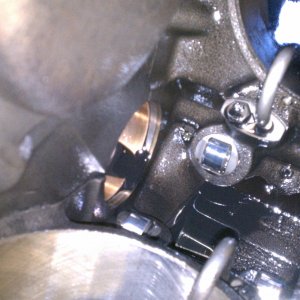Is it possible to limit the torque effectively, through tuning, while maintaining good horsepower to keep this from happening? I'm talking with Matt about this when he tunes my new set up for me. I'd love to be able to keep the truck ~1200 ft/lbs max. I'm not sure how this will affect horsepower throughout the power band, though.
No matter how you slice it, power is what is burning things up at steady-state towing duty. The driveline simply cannot transmit but a finite amount of power without overheating. Increase the rpm and lower the torque and the tooth to tooth pressure would decrease, but bearing and tooth friction would go up because of the rpm and you're right back to square one. Decrease the rpm and increase the torque and bearing and tooth friction comes down with lower rpm, but tooth to tooth and bearing pressure goes up because of the greater torque loads and again, right back to square one unless the
power comes down. If there was say a 16% parasitic loss through the driveline... and you were putting 300hp to the ground, then that means you were making 357hp at the crank and 57hp was being converted to heat, sound and vibration through the driveline.
57hp is 42,522watts. Imagine a 45,000watt heater in your trans fluid, blasting your u-joints and your diff fluid, gears and bearings.
And amazingly, the drivetrain seems capable of sustaining it.
Now bump it up to 400rwhp, and that turns into 76hp or 56,696watts of power doing nothing but churning and burning bearings, gears and u-joints.
500rwhp it becomes 95hp, or 70,800watts...
Meanwhile, back at the 200 or so the truck was desgined for, it's only 38hp.
At 500rwhp the parasitic load on the driveline is 2.5 times the design load. As long as you don't stay in the power for too long, nothing will get too hot. You can run your hand over a candle flame quickly with no problems, but if you leave it there for a moment, things get ugly.
Out on the interstate for hour after hour, things get ugly up under a superduty somewhere around ~300 wheel in my experience.












